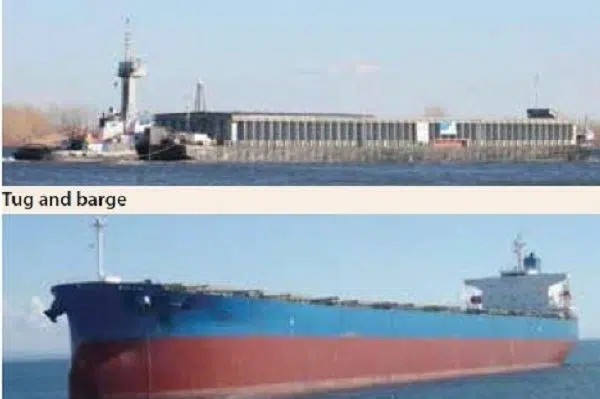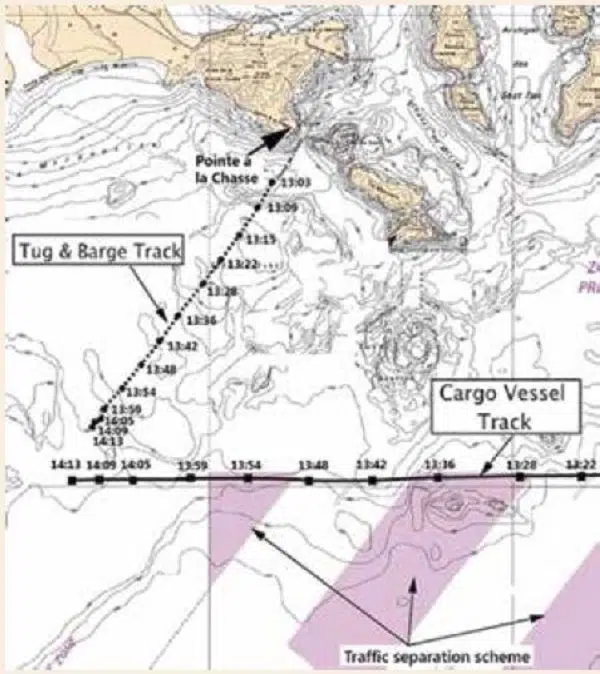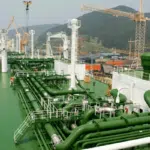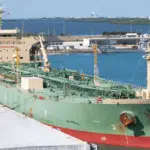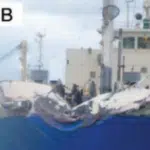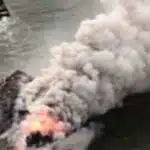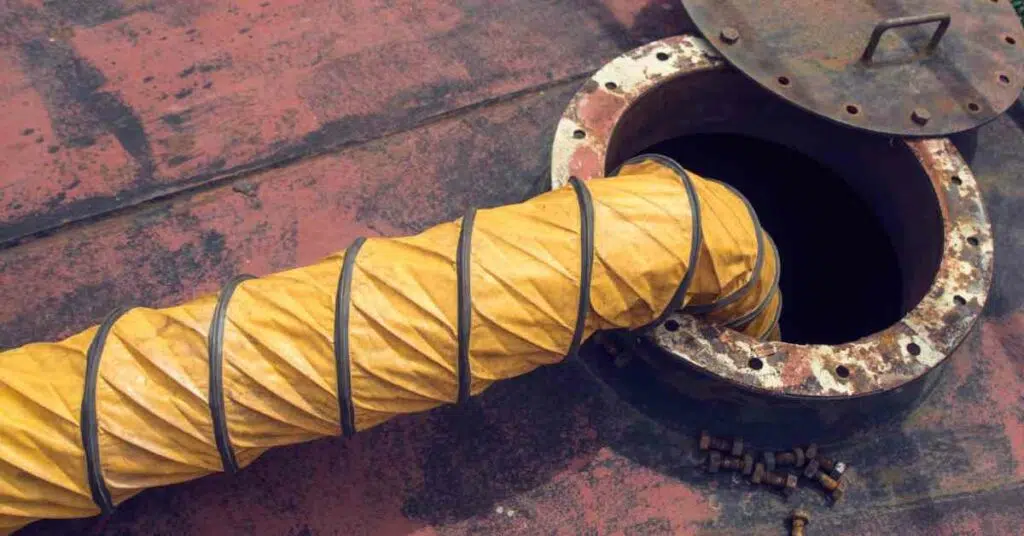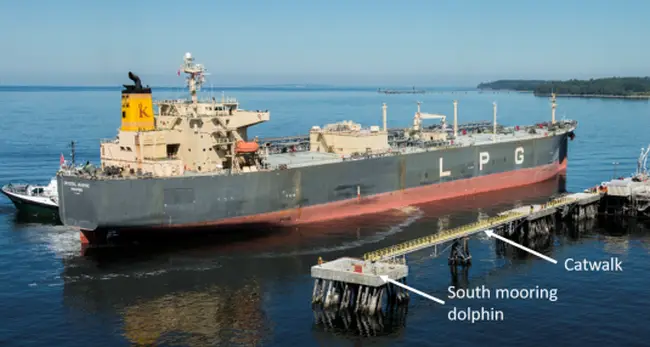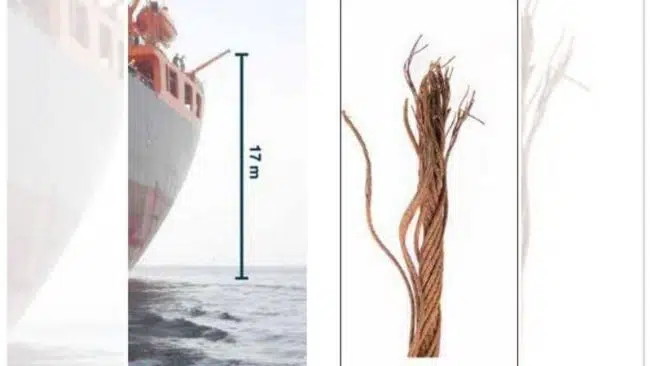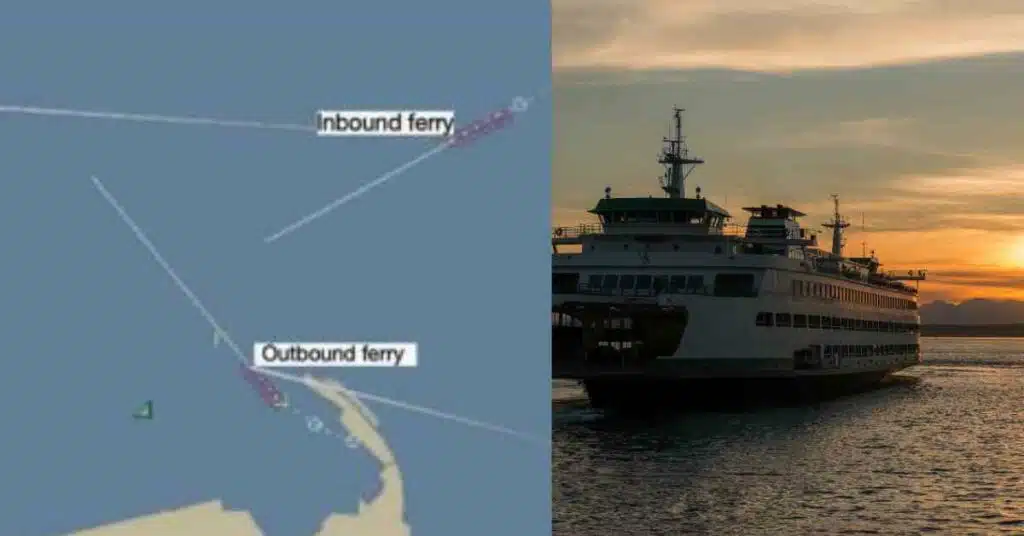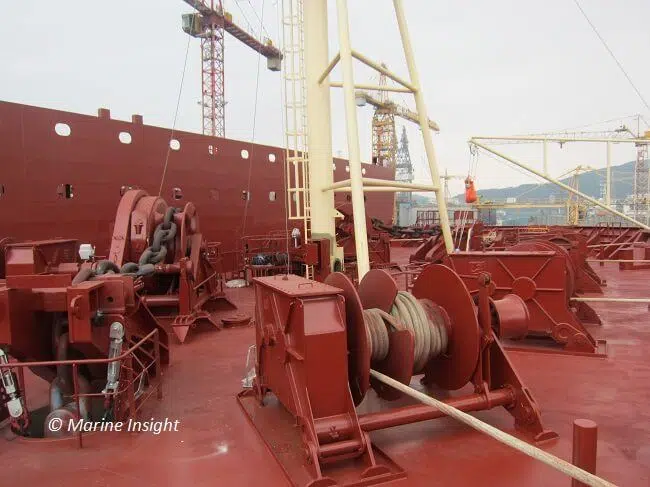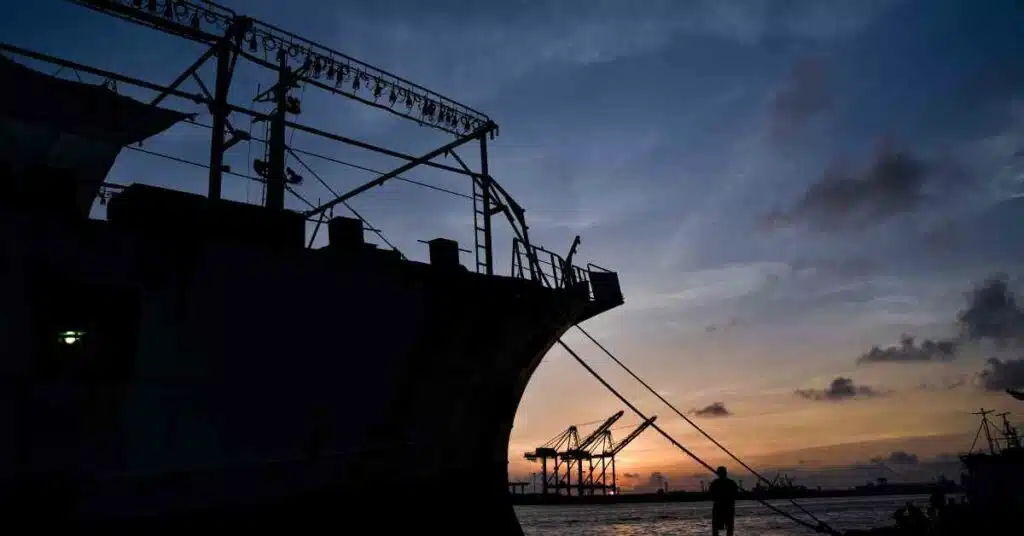Real Life Accident: Narrow Escape From Collision Between A Cargo Vessel And Tug Pushing Barge
A tug pushing a loaded barge had left port and was outbound. The weather was clear and winds were from the west-southwest at 10 to 15 knots with 1.5 metre seas. The tug and barge were abeam and clearing Pointe à la Chasse and the only immediate traffic in the vicinity, as reported by vessel traffic, was a cargo vessel that was heading for a port further west. At this point the Master on the tug handed the control over to the OOW and left the bridge; the vessel’s course was 216 degrees and speed was 6.5 knots.
Soon afterward, the OOW detected a target on the radar; the target was on the tug’s port side at about 12 nm. The OOW acquired the target with the automatic radar plotter and also verified the information on the automatic identification systems (AIS). The AIS identified the target as the cargo vessel mentioned by vessel traffic and indicated the closest point of approach (CPA) to be approximately 0.3 nm. The automatic radar plotter confirmed the CPA and indicated the cargo vessel would cross ahead of the tug.
Since the tug was the stand-on vessel, the OOW maintained course and speed and continued to monitor the cargo vessel. About 40 minutes later the cargo vessel was within 4.6 nm and had not yet altered course. The OOW, concerned about the developing close quarters situation, attempted to call the vessel on VHF, but was unsuccessful. Only when the vessels were about 3.3 nm from each other, with a CPA of approximately 0.25 nm, did the OOW on the tug finally make contact with the OOW of the cargo vessel.
The tug OOW asked the cargo vessel’s OOW his intentions and if he would alter to starboard to pass astern of the tug. The request was rejected by the cargo vessel’s OOW. He made an alternative proposal that both vessels should alter course a little to port in order to increase the CPA. This proposal was justifiably rejected by the tug’s OOW based on the collision regulations.
Soon, both OOWs had called their respective Masters to the bridge for assistance. When the Master of the cargo vessel arrived on the bridge and saw the tug and barge close on the starboard side, he ordered to reduce speed to half ahead on the telegraph. VTS also advised him that the tug and barge was requesting their vessel alter course to starboard in order to pass astern. The cargo vessel’s Master responded that they would try; the vessels were about 2 nm from each other with a CPA of approximately 0.25 nm.
Unclear as to the cargo vessel’s intentions, the Master of the tug sounded one short and one long blast on the whistle to alert his crew, then reversed engines to stop and let the cargo vessel cross ahead. No manoeuvring or warning whistle signals were sounded; however, the Master broadcast the manoeuvre astern on VHF radio. Shortly after, vessel traffic advised the Master of the cargo vessel that the tug was reversing engines. The cargo vessel acknowledged the call and replied that they would maintain course and speed and pass ahead of the tug and barge.
Findings of the official report
- The cargo vessel maintained course to pass across the bow of the tug without taking action to avoid the close quarters situation, resulting in a risk of collision.
- Following VHF radiotelephone communications, the tug remained unclear as to the cargo vessel’s intentions and did not sound the appropriate whistle signals to indicate their doubts. The tug maintained course and speed until it became apparent that the cargo vessel was not taking action.
- Upon arriving on the bridge, the Master on the cargo vessel reduced the vessel’s speed prior to assessing the situation, further reducing the CPA.
- The prolonged use of VHF radiotelephone communications in collision avoidance situations may preclude the bridge team from adequate monitoring, increasing the risk of collision.
Reference & Image Credits: nautinst
Do you have info to share with us ? Suggest a correction
- Real Life Incident: Vessel Collision in Good Visibility
- Real Life Incident: Severe Injury To Deck Crew While Leaving Berth
- Real Life Incident: Departure Damage in Very Restricted Waterway
- Real Life Incident: Low Situational Awareness Has High Impact Consequence
- Real Life Incident: Fouled Anchor in a Designated Anchorage
- Real Life Incident: Fire On Barge Carrying Scrap Metal Causes $7 Million Worth Of Damage
Latest Case studies Articles You Would Like:
Subscribe To Our Newsletters
By subscribing, you agree to our Privacy Policy and may receive occasional deal communications; you can unsubscribe anytime.



